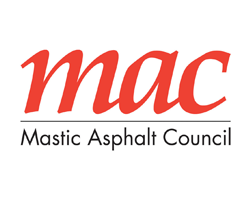Mastic Asphalt is one of the world’s most traditional waterproofing materials and has had a long and successful history, providing unbeatable protection from water penetration for centuries. Renowned for its high quality appearance and robust nature, when was it first used and what makes it so appealing today?
A material that can boast a history dating back to the Phoenicians, the product was patented by Mr Claridge in Paris in 1837 and mastic asphalt became known as Claridge’s Patent Asphalt. Mastic asphalt has maintained its place as the waterproofing material of choice throughout the centuries and is still specified today for many of the UK’s most prestigious buildings from St Paul’s Cathedral to Buckingham Palace.
This traditional material, comprising of limestone aggregates bound together with bitumen and more recently, modern polymers, is robust enough to withstand both foot and vehicular traffic and is both non-toxic and non-flammable. Its durability of use is one of its major benefits, with no application too tricky.
Offering a life expectancy of 50 years and more, this versatile waterproof membrane provides such excellent wear and is the ideal solution for a range of buildings including schools, offices, shopping centres, hotels and even churches.
Highly cost-effective, mastic asphalt offers lower installation costs than many other types of membranes. The material can be delivered to site, direct from the factory, at the correct temperature for instant installation. Hot charge transporters and insulated dumpers make this possible. One 15 tonne hot charge delivery vehicle can supply enough mastic asphalt to lay 300 square metres of material to a depth of 20mm. Its versatility makes it the ideal choice for not only flat roofing but also flooring and paving.
As if mastic asphalt’s reliability, cost-effectiveness and durability weren’t enough, it is also seen as one of the greenest construction materials in the UK.
Its eco-friendly qualities are appealing to specifiers who are increasingly more environmentally aware, providing a surge in interest for this most traditional of methods. When the mastic asphalt eventually does reach the end of its life, it can be recycled and broken down into hardcore or used in mastic asphalt roof screeds, helping protect the environment as well as the building for years to come.
In 2008, the UK mastic industry became the first in the world to achieve the CarbonZero standard. This means anyone choosing mastic asphalt as a means of waterproofing will enjoy the peace of mind that their developments will be 100% carbon neutral. The Mastic Asphalt Council’s (MAC) Carbon 100 initiative also ensures that thousands of associated sub-contractors also meet the stringent CarbonZero standard.

